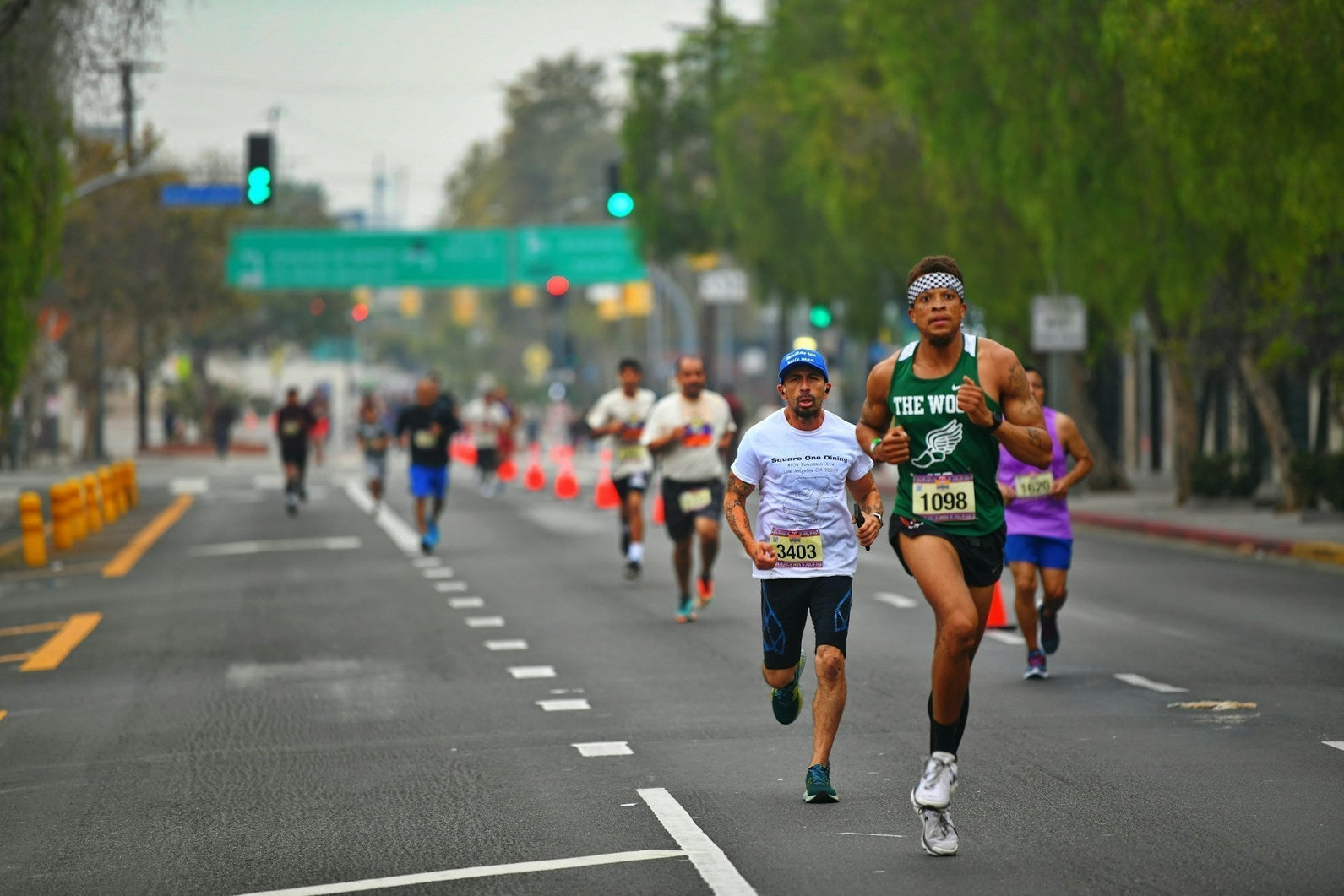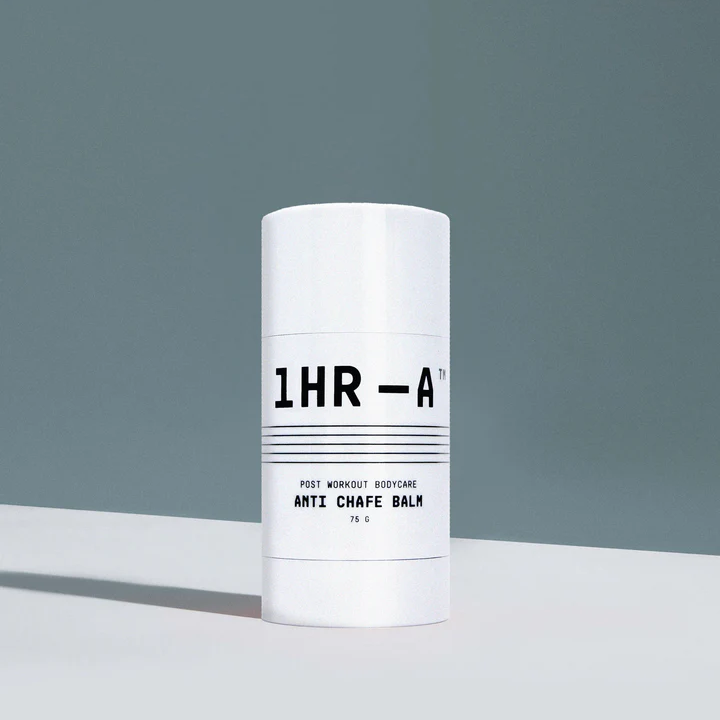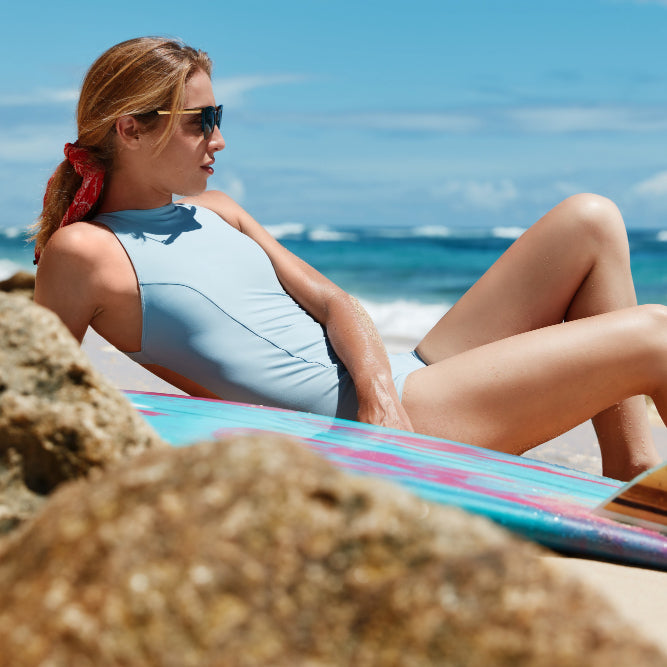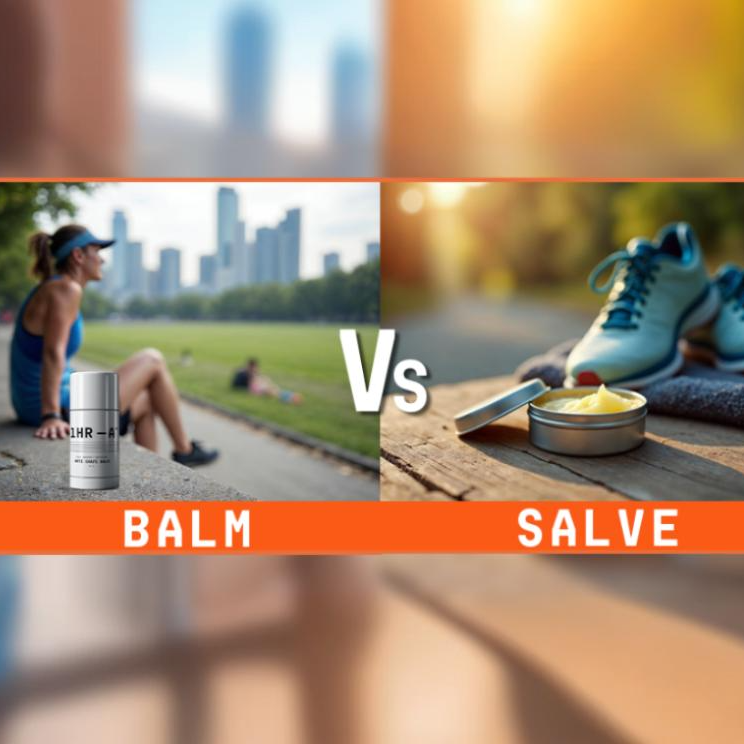
How to Prevent Chafing When Running: A Comprehensive Guide for Long Distance Runners and Endurance Athletes
Table of Contents
Chafing is an all-too-familiar issue for many runners, triathletes, and other endurance athletes. It’s that painful, irritating experience where you are 10km+ into a long event and the skin begins to rub against skin or fabric, causing rawness and discomfort and sometimes even bleeding. If you've ever crossed the finish line of a marathon or completed a long-distance bike ride only to find red, irritated patches of skin, you know how debilitating chafing can be. It’s not just a minor inconvenience; it can significantly impact your performance and recovery. With so many other factors at play on race day, chafing should be the last thing that you have to worry about. This comprehensive guide will help you understand what causes chafing, how it affects your performance, the areas most prone to chafing, and most importantly, how to prevent it.
What Causes Chafing??
Chafing occurs when there is repeated friction between your skin and another surface. This could be skin-on-skin contact, such as between your thighs or around your armpits, OR friction between your skin and clothing, like your sports bra or running shorts. The moisture from sweat or rain exacerbates the friction, leading to the breakdown of the outer layer of skin, which can cause irritation, pain, rawness, and even bleeding.
Key Factors Contributing to Chafing:
- Moisture: Sweat is a primary culprit in chafing. As you exercise, your body produces sweat to cool down, but this moisture also creates the perfect environment for chafing to occur, especially in areas where sweat tends to accumulate, like underarms, groin, and between the thighs.
- Friction: The constant rubbing of skin against skin or fabric is another key contributor that leads to chafing. The more repetitive the motion, such as during a long run or cycling session, the higher the risk of chafing. This is why you may not chafe on a 5-10km run but when you are exercising for longer periods of time you experience discomfort and sensitivity.
- Ill-fitting Clothing: As mentioned above, the friction between skin and clothing is a big contributor to chafing. Clothing that doesn’t fit properly is more likely to cause chafing than clothing that is snug or properly sized. Seams, rough fabric, or clothing that is too tight or too loose is more prone to rub against the skin, causing irritation.
- Environmental Factors: Heat and humidity (moisture in the air) can increase sweat production, which in turn increases the likelihood of chafing. Rain is also a contributor to chafing as it makes your clothes wet and heavy, further increasing friction.
The Effects of Chafing on Performance
Chafing is more than just a nuisance—it can also have serious consequences for your performance.
- Pain and Discomfort: The most immediate effect of chafing is pain. As the skin becomes irritated, every movement, step or action can become uncomfortable, distracting you from your run or race. This discomfort can cause you to alter your stride or posture, potentially leading to other injuries. Given that chafing typically occurs only after extended activity, your body is already likely experiencing fatigue and discomfort so you want to minimize as much of this as possible.
- Reduced Focus: When you’re dealing with the pain of chafing, it’s hard to stay focused on your performance. Your mental energy is diverted from your race or workout, which can reduce your efficiency and effectiveness. You’ve trained for months to be able to compete in this event, so limiting distractions or negative thoughts is essential.
- Potential for Infection: Chafed skin is a lot more susceptible to infection, especially if the skin breaks. Infections can lead to longer recovery times and may keep you out of training or competition. It is imperative to minimize the risk of infection by taking preventative measures against chafed skin.
- Longer Recovery Times: Not only can the effects of chafing hinder performance in the immediate activity you are performing but it can also lead to extended recovery times. Raw, irritated skin needs time to heal, and continuing to exercise on already damaged skin can prolong the healing process.

Areas Prone to Chafing
Understanding which areas of the body are most susceptible to chafing can help you take preventative measures. Here are the key areas to watch:
- Thighs: The inner thighs are one of the most common areas for chafing, especially in athletes with larger thighs or those who wear shorts that ride up. This is also common in not just runners but also cyclists and, depending on who you ask, is the most uncomfortable and debilitating as you cannot remove your shorts during an event.
- Underarms: The constant motion of your arms while running or cycling can lead to chafing in the underarm area. This can often be combatted by removing the shirt, although this is not an ideal solution.
- Groin: The groin area is particularly prone to chafing due to the combination of sweat, moisture, and friction. This area is a common trouble spot for runners, cyclists, and triathletes.
- Nipples: For male runners, nipple chafing can be a significant issue, often referred to as “runner’s nipple.” The friction between the fabric of your shirt and your nipples can cause irritation and even bleeding.
- Feet: Your feet are another hot spot for chafing, especially around the heels and toes. Ill-fitting shoes or socks can cause blisters, which are a form of chafing.
How to Prevent Chafing When Running
Preventing chafing requires a combination of the right gear, proper preparation, and good practices during your run or workout. Here’s how you can minimize your risk:
- Wear Moisture-Wicking Clothing: Invest in high-quality, moisture-wicking clothing designed for athletes. These fabrics help keep sweat away from your skin, reducing the moisture that can lead to chafing. Look for seamless designs and avoid clothing with rough edges or exposed seams.
- Choose the Right Fit: Make sure your clothing fits properly—not too tight, but not too loose either. Tight clothing can dig into your skin, while loose clothing can bunch up and cause friction. Test your gear on shorter runs or workouts to ensure it’s comfortable before using it for longer events.
- Use Anti-Chafe Balms: Apply an anti-chafe balm or cream to areas prone to chafing before you head out for a run or race. Products like anti-chafe sticks are specifically formulated to create a protective barrier on your skin, reducing friction and moisture buildup. Be sure to carry a small container with you during long races for reapplication as needed. 1Hour-After has recently released an anti chafe balm that is designed specifically for endurance athletes. It is formulated to be applied before or during an event without damaging clothing or leaving a sticky residue on the skin.

Keith Wallace, a running coach who has completed 20 marathons and seven ultra-marathons, emphasizes the importance of using anti-chafe balms. He says, “Anti Chafe Balms have never failed me through 20 marathons and seven ultra-marathons. During marathons, I never have to reapply, but during ultras, I reapply sometimes as a precaution to avoid chafing in the first place. I will use this product on my chest, groin area, and inner thighs” (Spartan Race).
- Stay Hydrated: Proper hydration helps regulate your body temperature and reduce excessive sweating. While you can’t avoid sweating altogether, staying well-hydrated can minimize the amount of sweat your body produces, which can help reduce the risk of chafing.
- Choose the Right Socks: When it comes to your feet, choose moisture-wicking, seamless socks that fit well and provide cushioning in high-friction areas. Consider double-layer socks or toe socks to reduce the chances of blisters.
- Opt for Compression Gear: Compression shorts or tights can be beneficial in preventing thigh chafing. These garments stay in place and reduce skin-on-skin friction, making them ideal for long runs or endurance events.
- Properly Fitting Shoes: Ensure your shoes fit properly. Shoes that are too tight or too loose can cause your feet to slide around, increasing friction. Break in new shoes gradually, and consider using specialized running socks that offer additional protection.
- Mind the Weather: On hot or rainy days, take extra precautions. In hot weather, wear light, breathable fabrics and stay hydrated. In wet conditions, use waterproof anti-chafe products and consider a lightweight waterproof jacket to keep your skin dry.
- Reapply Balm During Long Races: For marathons or triathlons, carry a small container of anti-chafe balm with you. Reapply it to vulnerable areas as needed, especially if you start to feel irritation.
- Treat Chafed Skin Immediately: If you do experience chafing, it’s important to treat the affected area immediately. Clean the area with mild soap and water, apply an antiseptic ointment, and cover it with a clean, dry bandage. Avoid further irritation by wearing loose clothing and applying soothing balms designed for post-chafe care.
Conclusion
Chafing might seem like a small issue, but it can have a big impact on your athletic performance and overall comfort. By understanding the causes and effects of chafing, identifying the areas most prone to irritation, and taking proactive steps to prevent it, you can keep chafing at bay and focus on what matters most—achieving your personal best. Whether you’re training for your next marathon, gearing up for a triathlon, or just enjoying a long-distance run, these tips will help ensure that chafing doesn’t get in the way of your goals.
As the holiday season approaches, consider giving the gift of comfort to the athletes in your life. High-quality anti-chafe balms, moisture-wicking clothing, or supportive gear can make perfect Christmas gifts for those who train hard.
Remember, every athlete is different, so it’s essential to experiment with various strategies to find what works best for you. With the right approach, you can prevent chafing and enjoy a more comfortable, focused, and successful athletic experience.
More Articles
- Choosing a selection results in a full page refresh.
- Press the space key then arrow keys to make a selection.




